One of the greatest contemporary artists in one of Italy’s most beautiful Renaissance towns. In fact, Georg Baselitz (Hans-Georg Kern; Deutschbaselitz, 1938) is the protagonist of a solo exhibition in Sabbioneta, where from April 27 to November 24, 2024, the majestic Renaissance architecture of the Galleria degli Antichi in Palazzo Giardino welcomes Belle Haleine, a solo exhibition by the German artist, a leading figure in the world of contemporary art and considered one of the greatest living artists. Organized by the Sabbioneta Heritage Foundation and curated by Mario Codognato, this international exhibition aims to mark a significant moment in the management and enhancement activities of the artistic and monumental heritage of the UNESCO site of Sabbioneta, the Ideal City founded by Vespasiano Gonzaga Colonna in the second half of the 16th century. Under the magnificent wooden ceilings and along the twenty-six arches of Palazzo Giardino’s Galleria degli Antichi, the second-longest frescoed gallery in Italy after that of the Uffizi, impressive sculptures, large paintings on canvas and, for the first time all together, ten provocative etchings by Georg Baselitz will be on display. Baselitz is known to international audiences for his vigorous and ruthless strokes, as well as his habit of depicting figures upside down, becoming a kind of cantor of 20th-century anxieties.
Belle Haleine exhibits some of the most significant works from Georg Baselitz’s artistic journey, giving the public a broad view of the multifaceted nature of the pioneer of neo-expressionist art. A fundamentally important element in understanding Baselitz’s work is the strong connection that binds him to the art of Marcel Duchamp: in fact, the very title of the exhibition is a direct reference to the Belle Haleine work of the same name , Eau de Voilette (“Beautiful Breath, Veil Water”), created by Marcel Duchamp and Man Ray in 1920. In addition to the sculptures and large paintings on canvas, the exhibition will feature, as mentioned, ten engravings, hand-printed linocuts of considerable size, each exceeding two meters in height. These engravings depict scenes from 19th-century erotic lithographs depicting partially clothed loving couples. The etchings were first exhibited by Baselitz in 1963, during his first solo exhibition in West Berlin. Although today erotic scenes and sexual innuendo no longer shock the viewer, at the time of the first exhibitions two of his paintings were seized by prosecutors and charged with obscenity and immorality. The later addition of white holes to cover the genitals of each pair of lovers can thus be interpreted as an act of self-censorship, but that would be only a partial explanation: “a hole in the painting allows the imagination to turn around, like the hole in a record, around which music plays,” the artist says.
The linoleum etching technique used by Georg Baselitz to create the works on display in the exhibition represents a marriage of tradition and innovation. Linoleum, a malleable and versatile material, allowed the artist to work on a monumental scale with relative ease, expressing his artistic vision in a bold and dynamic way. In these etchings, there is a clear reference to traditional Chinese art, particularly the work of the 17th-century painter Bada Shenren. Bada Shenren’s influence is especially evident in the use of negative space, the lightness of the cutting line, and the elegance of the repeated, short, dynamic strokes. These elements give Baselitz’s works a sense of balance and harmony, as well as a visual depth and complexity that recall the techniques and styles of traditional Chinese art.
The exhibition’s ecological display, made with Ecological Panel® supplied by Saviola Group, is intended to reflect the Sabbioneta Heritage Foundation’s commitment to environmental sustainability in the management of cultural heritage and the organization of cultural events. This panel, made from 100 percent post-consumer wood, represents an example of circular economy and responsible use of natural resources. Through this choice, the exhibition also aims to promote values of environmental responsibility and conservation of our planet. The exhibition is realized with the contribution of Gruppo Tea and BCC Banca Rurale Artigiana di Rivarolo Mantovano.
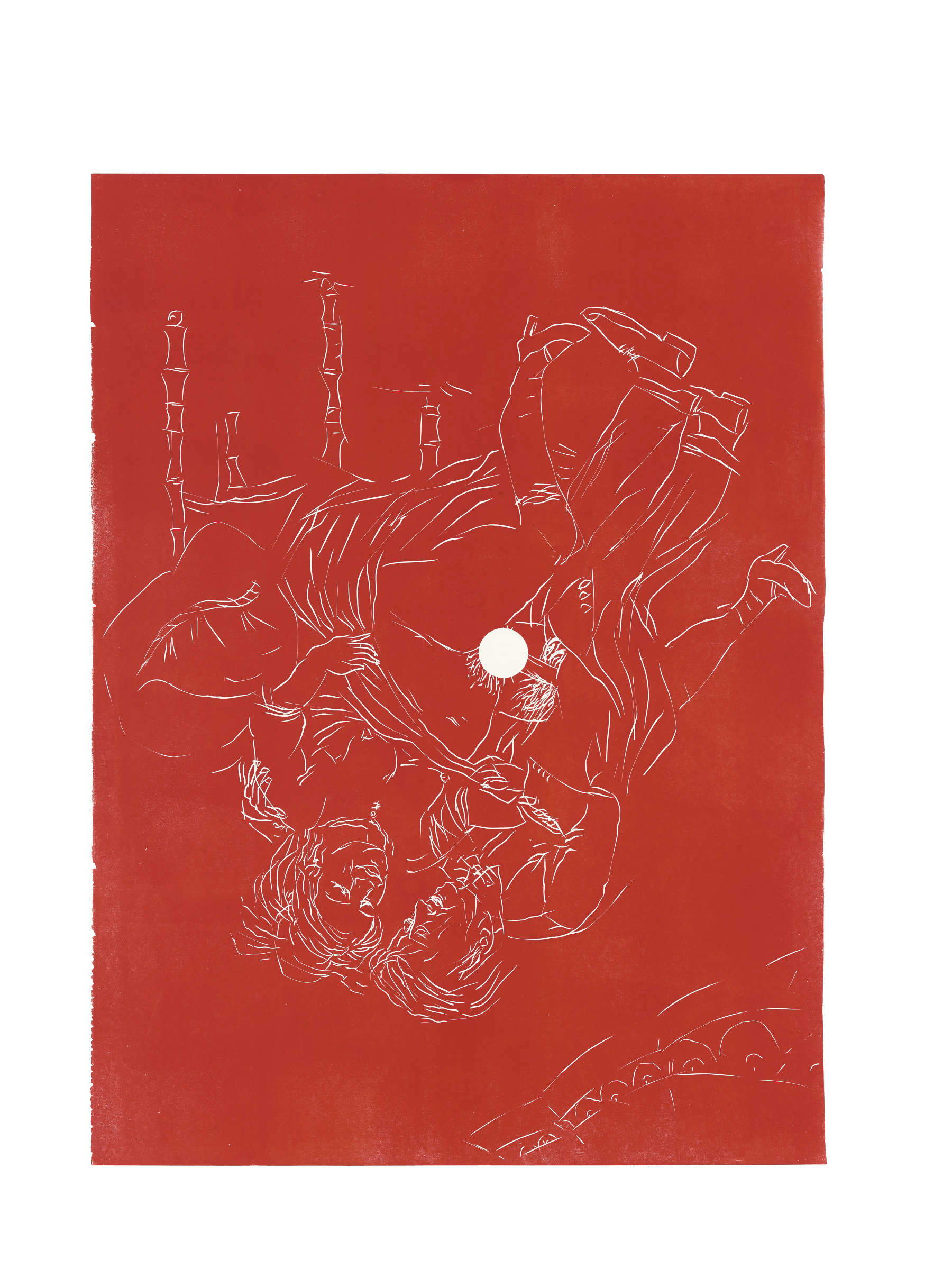
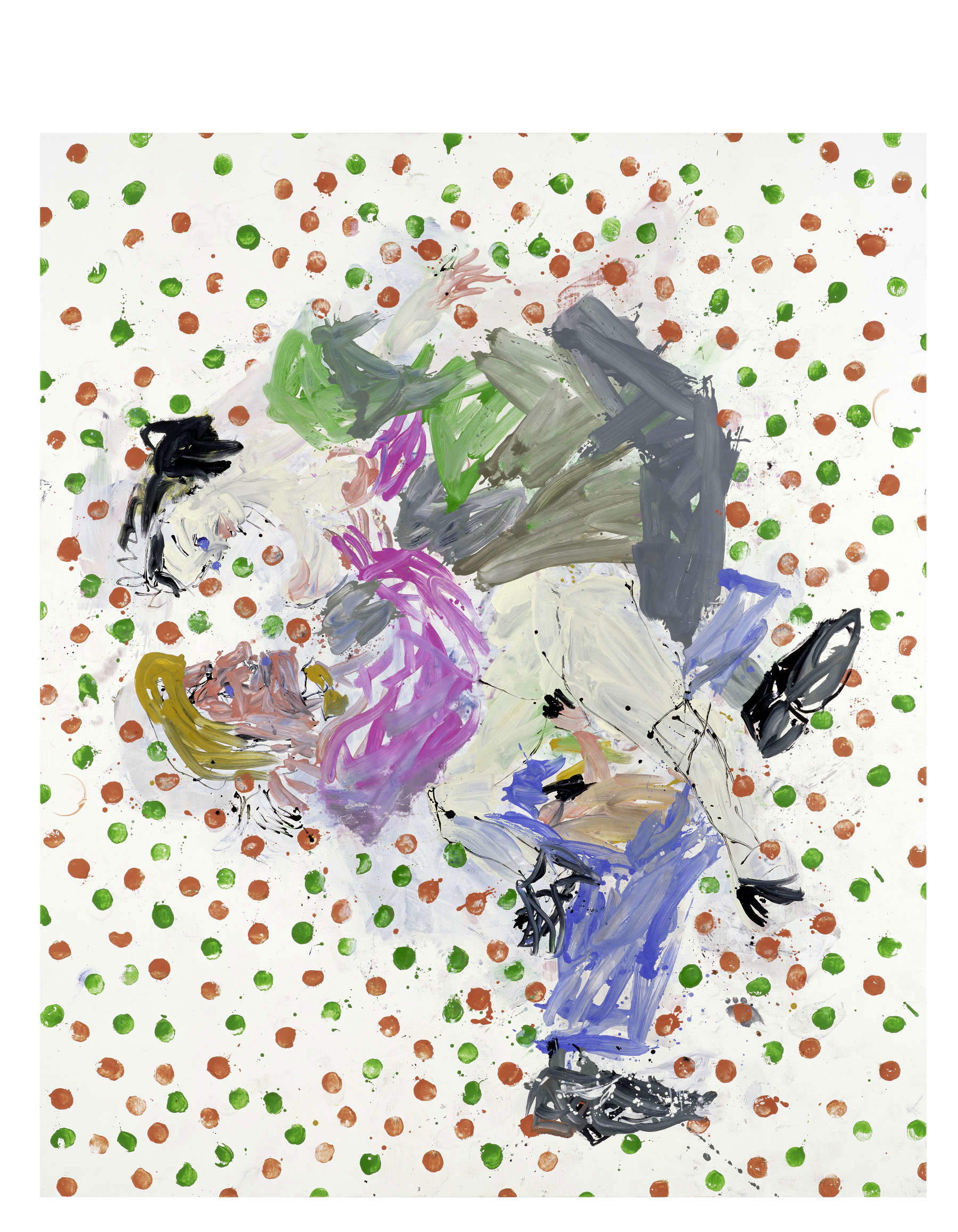

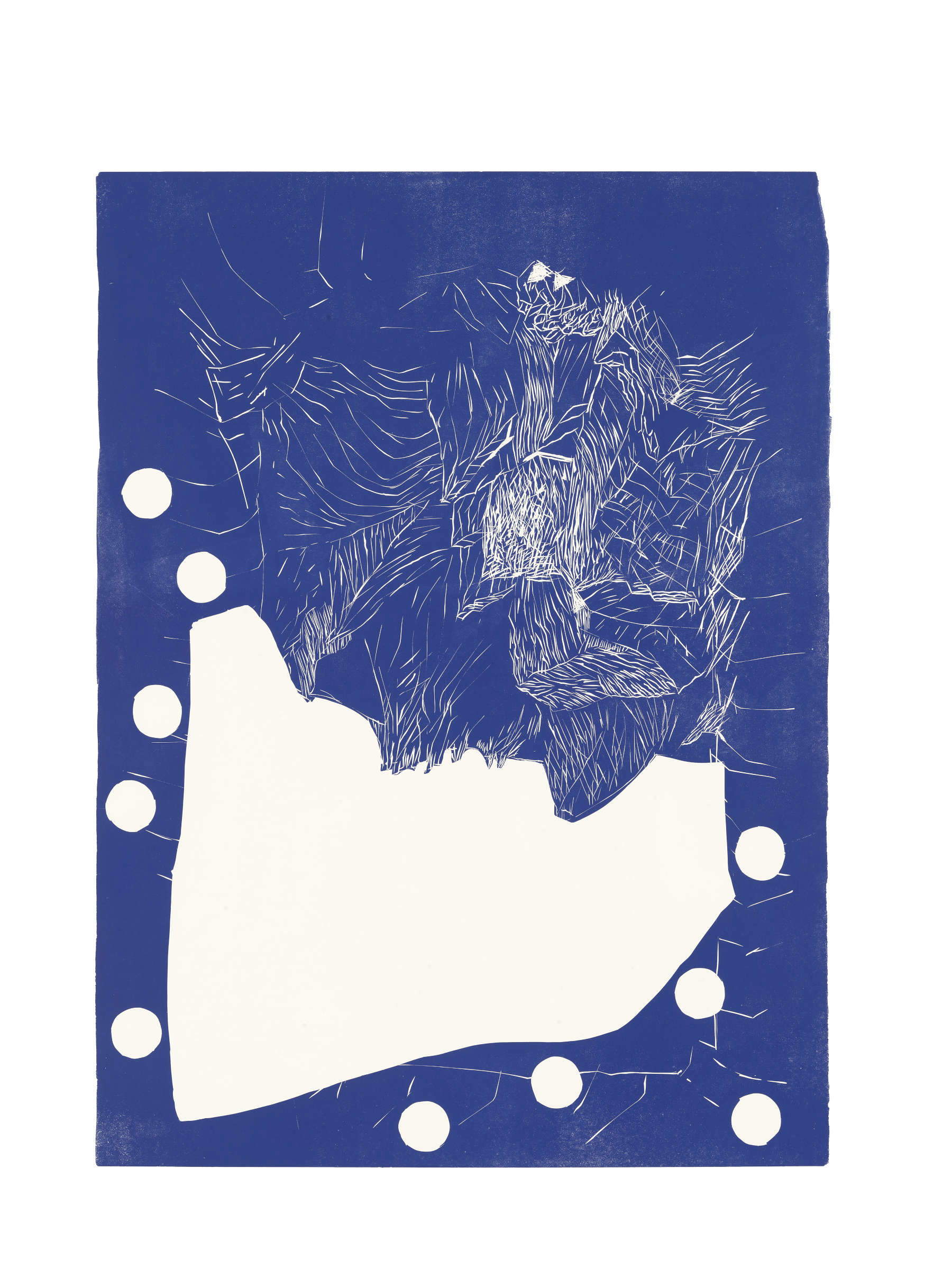

“This exhibition notably marks the first time that the ten colossal and provocative hand-printed linocuts collectively titled Belle Haleine have been exhibited together since they were made and presented over 20 years ago,” Mario Codognato explains. “The name is taken from an artwork by Marcel Duchamp, an artist Baselitz often refers to, resenting the thesis he proposed in the early 20th century: painting is dead. Baselitz continues to undermine this claim through painted pastiches of Duchamp’s words and works, in a kind of ”elaboration through an adversary."
Ezio Zani, Director of the Sabbioneta Heritage Foundation (former Director of Parma Italian Capital of Culture 2020+21), adds, “As antithetical and dissonant as the figure of Vespasiano Gonzaga, duke, condottiere and city founder, may seem with that of Georg Baselitz, son of the people and artist with a sincere to the point of being ruthless trait, at the center of both men’s thinking there is always man: Vespasian’s man who placed at the center of his ideal city in cultivating myth and Baselitz’s man, a defeated but not resigned hero, who witnesses the fall of ideologies. Different perspectives but, at the end of it all, always and still a man. Bringing Georg Baselitz’s great painting to the Duke’s gallery might appear, superficially, almost desecrating; on the contrary, on closer inspection, it is a consecration and the act of restoring these environments to their vocation of preserving beauty.”
Gianni Fava, President Sabbioneta Heritage ETS, says, “With a view to a progressive international positioning of Sabbioneta as a culture-producing city, starting this spring we are going to program annual exhibition events that will be combined with an articulated program of functional modernizations, technological innovation yards, and participation workshops. In particular, for the cultural and touristic revitalization of the ancient palaces of the UNESCO site of Sabbioneta, we will bet on a juxtaposition of ancient and contemporary, with works by great living masters placed in the unique places that history has given us.”
“This is a unique opportunity for Sabbioneta,” stresses Mayor Marco Pasquali. “After decades, our city returns to claim an important role in the European cultural context, as is proper to its history. A new road, the one traced by the Sabbioneta Heritage Foundation, which aims to enhance the tourist and cultural prerogatives of a small historic center that is a World Heritage Site. A reality that of Sabbioneta that opens to the world, maintaining authenticity and roots, looking with renewed confidence to its future.”

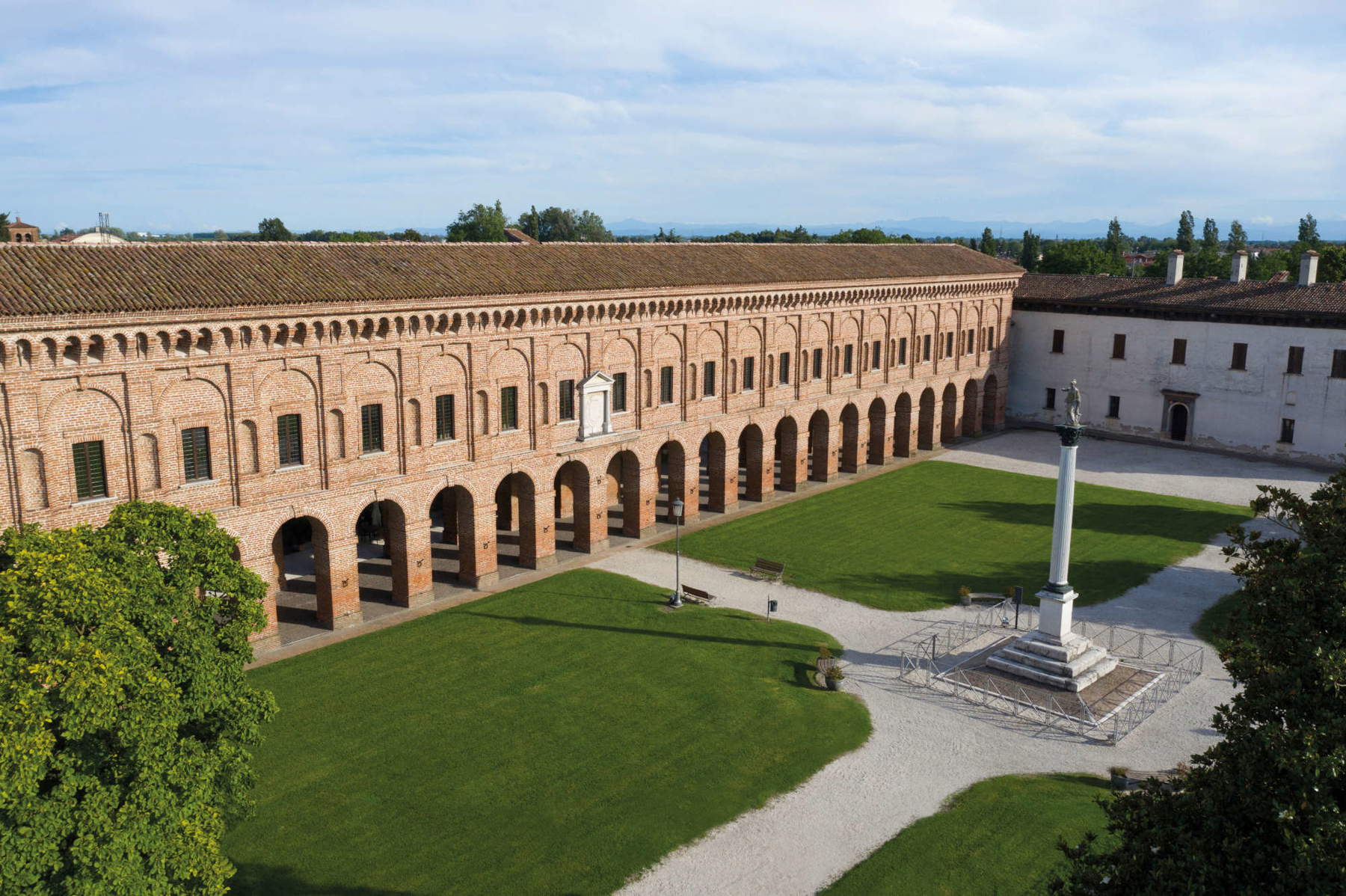 Sabbioneta,
Sabbioneta,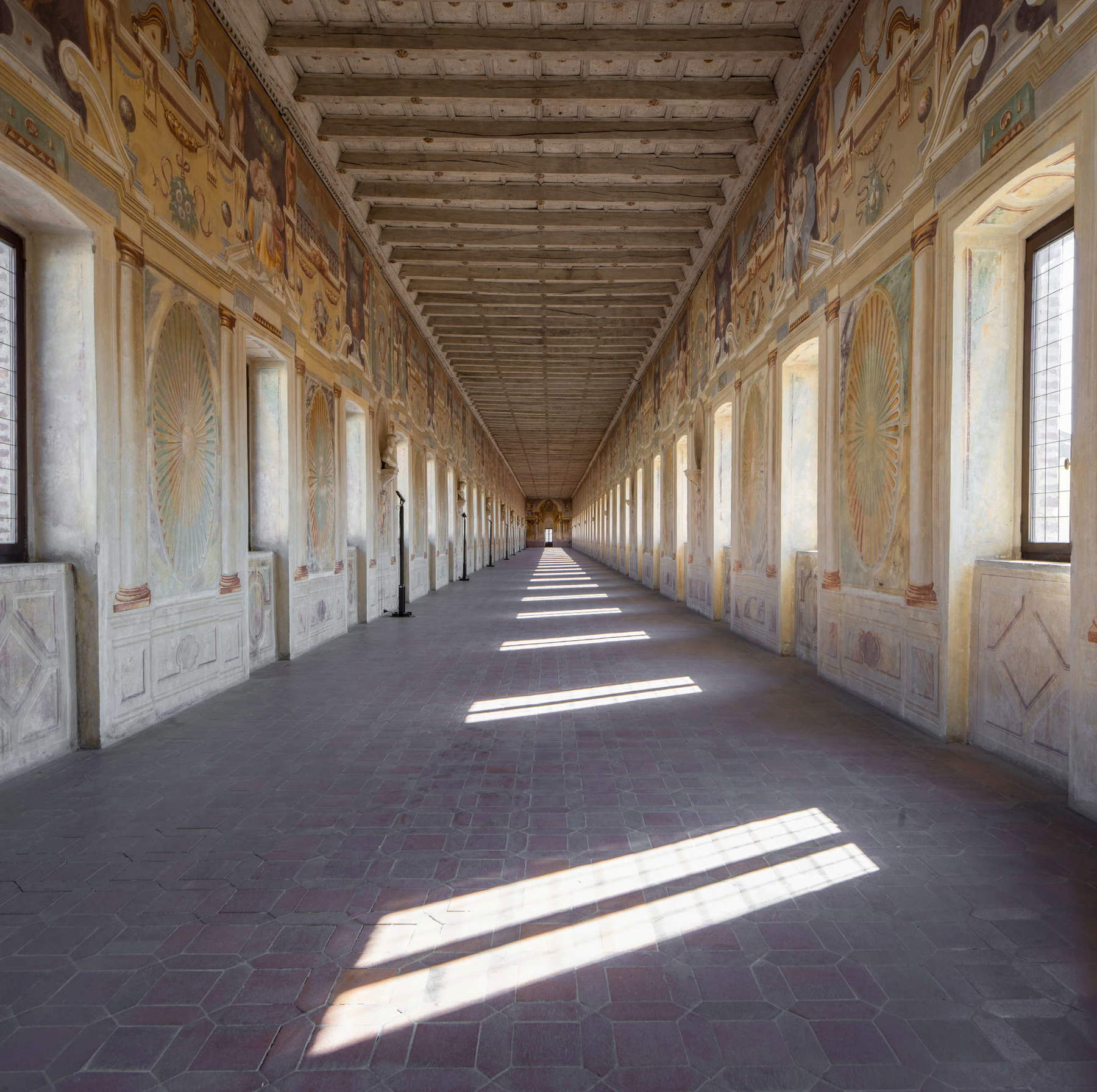 Sabbioneta,
Sabbioneta,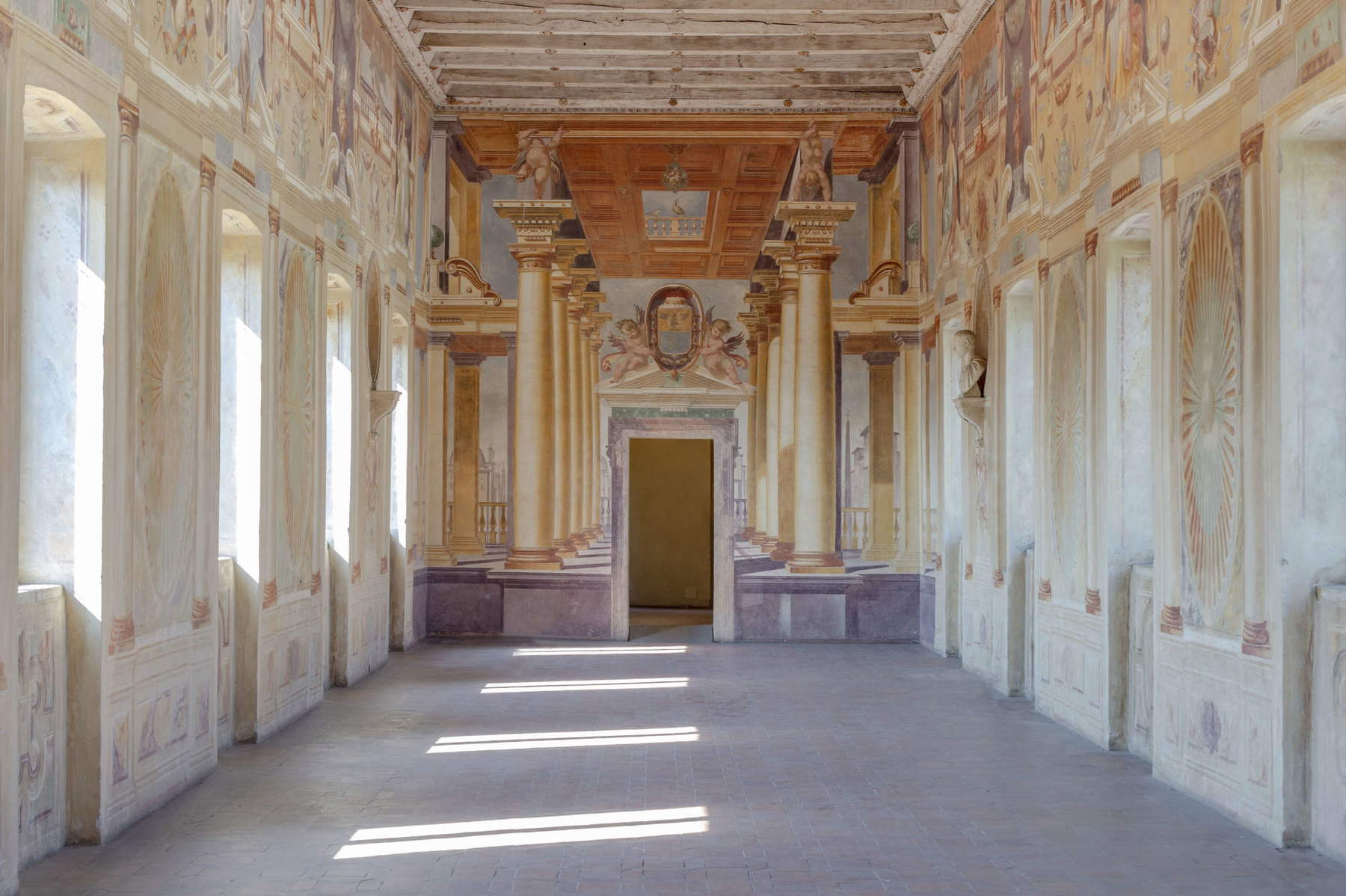
Hans-Georg Kern, better known by his stage name Georg Baselitz, is an iconic figure in contemporary art. Born in 1938 in Deutschbaselitz, Saxony, a region that would later become part of East Germany, he began his artistic training at the East Berlin Academy of Art, but was expelled in 1956 for what was termed “political immaturity,” as he did not conform to the artistic standards imposed by the GDR. He then enrolled in the West Berlin Academy, where he completed his studies in 1962. During this period he adopted the surname Baselitz, which recalls his birthplace, Deutschbaselitz.
His artistic career began in 1963 with his first solo exhibition in Berlin, stirring considerable controversy and attracting the attention of German authorities, who confiscated some of his paintings for public indecency. In his early years, Baselitz composed a series of paintings depicting monumental male figures, influenced by the Italian Mannerist prints he had the opportunity to study in Florence in 1965 during a fellowship. The year 1969 marked a pivotal moment in his career when he introduced the technique of inverted images, which became his hallmark for the next 50 years. With this technique, Baselitz challenges the viewer to resist a descriptive interpretation of the work, focusing instead on the pure sign, which becomes the true subject of his works. In the 1980s and early 1990s, his work evolved to become denser and more complex, and Baselitz established himself internationally with exhibitions at the 1980 Venice Biennale and Documenta in 1983. In 2021 he was elected a foreign associate member of the Académie des Beaux-Arts, one of the most prestigious institutions of the Institut de France.
Baselitz is known to be a prolific printmaker, engaged in a variety of technical processes including woodcut, linocut, and etching. He describes the enduring qualities of copper plates, wood blocks and linoleum blocks as creative forces in his art, harnessing the characteristics of each material to create works of great visual and symbolic impact. Prints, according to Baselitz, possess a “symbolic power that has nothing to do with a painting,” underscoring the importance of this medium in his artistic practice. Although he has his own printmaking practice, Baselitz prefers to collaborate with a selection of leading studios and master printers to create his graphic works, taking full advantage of the skills and technique of experts in the field.
Baselitz’s works, which include paintings, sculptures and etchings, are in the permanent collections of major museums and in the world’s most accredited galleries and private collections. This has established him as one of the greatest living artists, recognized for his significant contributions to the history of contemporary art.
 |
| In Sabbioneta, Georg Baselitz on display with his works in the Galleria degli Antichi |
Warning: the translation into English of the original Italian article was created using automatic tools. We undertake to review all articles, but we do not guarantee the total absence of inaccuracies in the translation due to the program. You can find the original by clicking on the ITA button. If you find any mistake,please contact us.